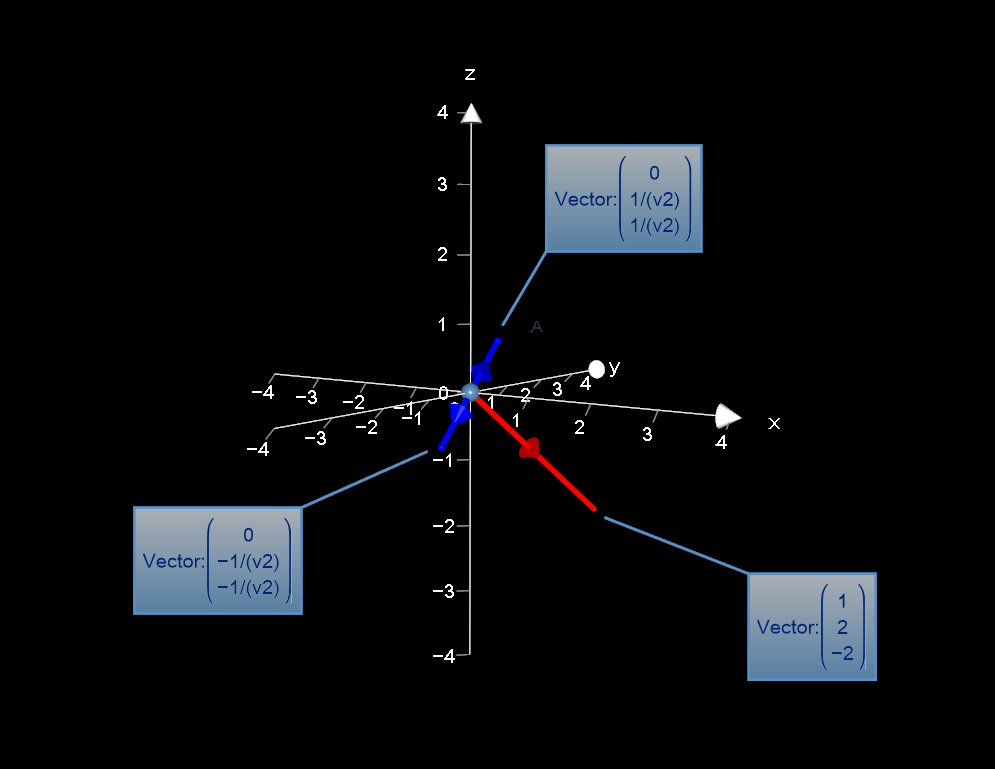Given the vector a = i + 2j - 2k, find a possible set of values for y and z such that b = yj + zk is a unit vector that is perpendicular to a. Should I use dot product or cross product? How do i identify which method to use? Please help.
1 Answer
Explanation:
I will use the scaler product( dot product) for this:
We know if two vectors are perpendicular, the their dot product is zero.
For vectors a and b
Dot Product
For a non-zero solution:
Our vector will just be in the form:
For arbitrary
Check:
For
The unit vector is:
For arbitrary
The set of values will be:
Notice since we have no
PLOT:

You could use the cross product here. Since the cross product is non-commutative you would have to do both:
I would use the dot product where possible.

